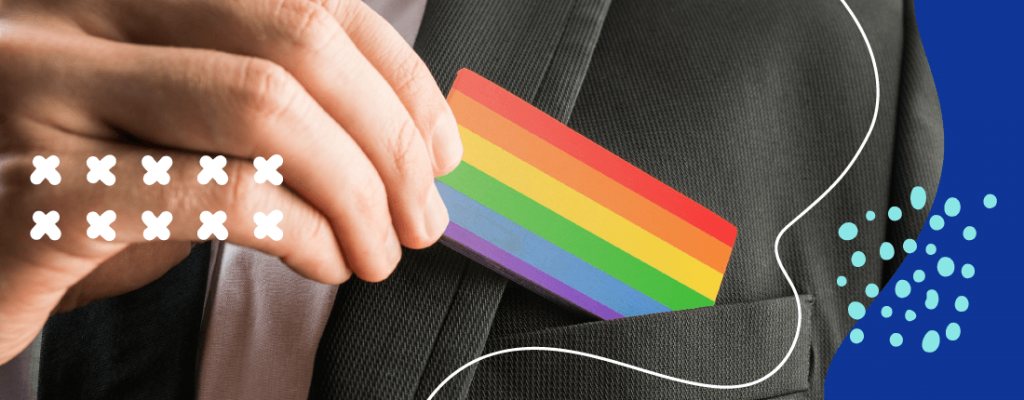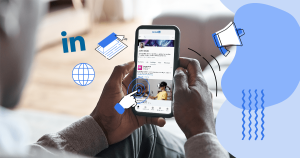Every time June (Pride Month) comes around, lots and lots of brands change their logo to a “rainbowed” version as if it were a competition. But is this practice really effective for their image? And, more importantly, is this really helping the LGBTQIA+ Community? Let’s answer the question and reflect on that for a second.
Being diverse is not just a whim from brands. As we have evolved as a society, we figured out how the world is full of inequities. Today, many organizations and countries are working to reduce these problems. It is not a coincidence that the United Nations (UN) has chosen gender equality and reduced inequality as one of the new goals for sustainable development.
When we talk about the struggles of the LGBTQIA+ community, representation in the media is something very common nowadays. As a consequence, brands can feel forced to reflect this reality in their communication. You know, everybody wants to be “trendy”.
However, these attempts to look or appear more “diverse” or “inclusive” can fall on the superficiality and even simplify the difficulties. When this phenomenon happens, the LGBTQIA+ community call it “Rainbow Washing” or “Pinkwashing,” an issue that companies should seek to avoid.
What is rainbow washing?
First, let’s get to know what Rainbow Washing is. As defined by ThisIsGendered, it refers to the act of using or adding rainbow colors and/or imagery to advertising, apparel, accessories, landmarks, et cetera, in order to indicate progressive support for LGBTQIA+ equality (and earn consumer credibility) – but with a minimum of effort or pragmatic result.
In this line of ideas, it is simple to see how a large number of brands make changes to their logo during the Pride Month.
Nonetheless, the decision to alter branding resources is not done randomly. In theory, changing central branding devices can help people to remember the traditional logo more easily.
But when everyone does it, all the time, often for the same reason, and over the exact same period, is the effect still so impressive? Will anyone even notice anymore, given every other brand has the same rainbow hue?
An example of rainbow washing
A very polemic case of rainbow washing happened with Barilla, a multinational food company. Everything started back in 2013 when the CEO, Guido Barilla, said in a live interview that he would never make a commercial with a homosexual family. Obviously, the comment caused global outrage, generating the hashtag #boycotbarilla.
The crisis was a catalyst for talking about Diversity and Inclusion, and it took almost five years to clean the company’s reputation. However, the criticism from the LGBTQIA+ community is still there. Barilla is still accused of pink washing. After the homophobic comments of their CEO, adding a rainbow to the package is not enough to show solidarity with the community.
This cautionary tale teaches us that if we really want to enter the “LGBTQIA+ friendly wave” we have to make sure to do it with the right intentions.
Let’s think. Why do brands choose to show themselves as diverse?
Younger generations are more aware of some of the world’s problems. Thus, they are more willing to support more altruistic causes. And that is how diversity and inclusion have become one of the main interests of these new generations. For example, according to Deloitte, 83% of millennials are more engaged when they think their company fosters an inclusive culture.
As no one wants to stay behind, the decision-makers of big enterprises are looking for ways to meet the rising expectations of the general audience. Sometimes, they take a good approach and other times they do not.
For example, in a survey conducted by Adobe, 38% of respondents said they were more likely to consume products and services from brands that show diversity in their ads. Moreover, 34% have boycotted a company at least once because they don’t feel their identities were represented in the companies’ actions.
Also, it is important to know that being inclusive has become something that has a positive impact on companies. According to McKinsey, companies in the top quartile of gender diversity are 15% more likely to have financial returns above their national industry median. Companies in the top quartile of racial/ethnic diversity are 35% more likely to have financial returns above their national industry median.
Diversity done right
Luckily, we can still see some good examples of how to be truly diverse. Adobe has launched an initiative that compasses its own company culture, hiring diverse talent from a great variety of backgrounds. They also participate in forums, conferences and donate to fundraising activities.
One of their greatest initiatives was Adobe For All Summit launched in 2019. The approach of the event was to share best practices and updates about diversity and inclusion strategic progress.

The lesson is: before waving any flag, first you need cohesion inside your company via tangible actions by creating a culture among all levels of your organization.
Other forms of color washing
The problem doesn’t only apply to Pride Month. There are other forms of color washing beyond rainbow washing.
First, let’s understand color washing as an umbrella term for the profit-driven practice of corporations of deceptively communicating unsubstantiated values in products and services in order to appeal and market them better to socially and environmentally aware consumers, as defined by the column of The Sustainable Fashion Matterz.
With this order of ideas, we can set the principal methods of color washing:
Pinkwashing
It is very commonly used from LGBTQIA+ occasions. However, it can also be related to female empowerment, where it promotes a feminist facade while having exploitative or unequal salaries towards women.
Greenwashing
This speaks about delivering misleading messages about sustainability practices. It happens when a brand calls itself “eco-friendly” but still fails at being sustainable in their processes.
Brownwashing
This phenomenon was very common during the Black Lives Matter debate during 2020. It appeals to Black, Brown, Indigenous or people of color. It happens a lot when a company appears to be supportive of this community but doesn’t implement internal practices to actually empower them.
Whitewashing
It is when a brand is somehow related to a tragedy and doesn’t take responsibility for what happened. An example of this is what happened at Rana Plaza Collapse, where the building collapsed due to a number of engineering and administrative failures. The tragedy reflected the importance of restructuring the Fashion Industry. The criticism came when, even years after the tragedy, the retailers involved still hadn’t compensated the victims or their families, nor taken action to improve the workplace infrastructure.
What are we, at Rock Content, doing to not fall into color washing?
Diversity, Equity and Inclusion (DEI) have always been part of Rock Content’s values since 2013, when we were founded. In 2019, we officially structured our Social Impact and Diversity, Equity and Inclusion areas.
At Rock Content, we treat the uniqueness of each person with due fairness and respect, we listen carefully to all voices, and we act to transform realities beyond our employees and consumers.
For us, social impact means sharing knowledge to underrepresented groups that are in social and economic vulnerable positions — with focus on gender, race, disabilities and affective-sexual orientation, among others. It is possible through the promotion of education, enabling inclusion in the market, and ensuring equity in the business. With these initiatives, we promote more opportunities for employability and also socioeconomic growth.
In 2021, Rock Content impacted 20,000 people by donating Rock University scholarships to underrepresented groups. Today, 52.8% of Rock Content’s team is composed of women, and 49% of leadership positions are held by women.
In the same year Rock Content took another major step towards accelerating social change. Through Pledge 1%, Rock Content committed to donate 1% of it’s equity to education and employability initiatives and projects.
Avoid color washing
So, with all Rock Content’s knowledge about how to really promote social change, here are some practices we can share for you to avoid falling into color washing:
- Be an ally every day. It’s ok if you want to make something special for these dates, but don’t forget to show commitment for all 365 days of the year.
- Support education and opportunities for all. Showing solidarity through fundraising is also a plus.
- Focus on actually giving space to those minorities. Create opportunities for them to grow inside the company and improve their careers.
- Be coherent between your public image and your internal processes.
The lesson is very simple: it’s worthless adapting a flag when you don’t understand the nuances of what you’re defending. If giving visibility to those minorities is a good idea, the change has to start from the inside. That is how you can effectively support a movement and go beyond what is “trendy”.







